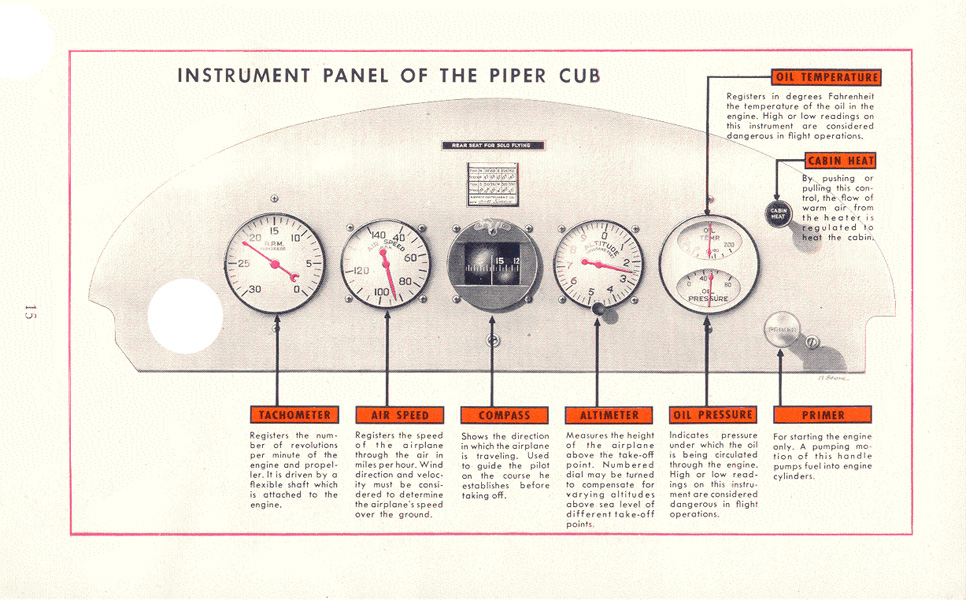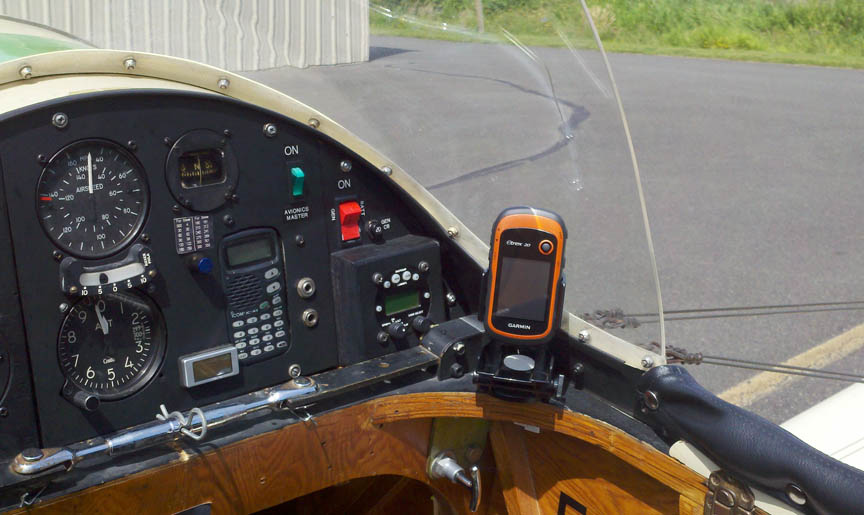This may sound pretty goofy, but the question comes from a series of conversations I've had with other pilots and builders, and the opinions vary widely.
Bear in mind I'm talking about strict VFR and no interaction with the ATC at all.
I've got in my little open cockpit Nieuport 11:
Altimeter
Air Speed Indicator
Compass
Turn and Bank (slip) Indicator
Tachometer
Oil Pressure Gauge
Oil Temperature Gauge
Fuel Gauge (sort of, it's like in a Champ, a stick on a bobber in the tank in front of the windscreen)
I put them all in because it's kind of expected for them to be there, but in honesty I only use three, and sometimes a fourth:
Slip indicator*
Oil Pressure
Oil Temperature
Compass
(I omitted the gas gauge as it's right in front of me bobbing around and pretty hard to miss)
I will look at the ASI or the Altimeter once in awhile, but since I'm a low and slow guy can tell you what they're indicating by the sing of the wires and how big the cows in the field are. I'll use the compass to plot the direct course back to the airfield if I'm not using landmarks.
The tach was useful in determining what it's turning at the start of flight testing, but now I can tell by sound and vibration. Again, it's a VW and isn't going to over speed with that big wooden prop in the front.
My ASI has been unreliable from the start, reading 10 MPH too fast. I'm going to pull it and test it, and have been given a lot of advice on where to move the static port to if it's okay. I'm not too hot to get it done, as I never really pay attention to it. My built-for-drag airplane isn't going to over speed, after all.
I mentioned either just omitting it or replacing it with a mechanical one that relies on some music wire and a paddle on a scale hooked to wing strut, only to be met with a look of dismay by a fellow pilot.
"You have to have an airspeed indicator," he insisted.
"Why?" I asked, and he shook his head and walked away, muttering, as if I was ignorant about something basic and true.
Your thoughts?
* With a free-flying rudder, the ball is actually the most important instrument on my panel. If the rudder is off to one side even just too much, one has a tendency to correct for the roll with the aileron in the opposite direction subconsciously. One can wind up pretty cross-controlled in level flight. The guys who fly this type of plane warned me about it, and damned if they weren't right - it's easy to do! So checking the ball regularly is something I do in flight.



 Reply With Quote
Reply With Quote




